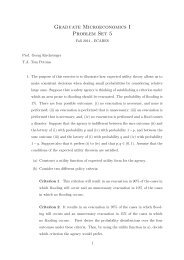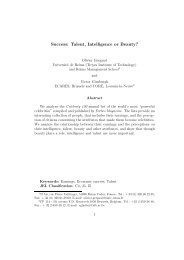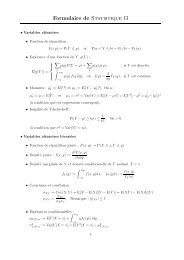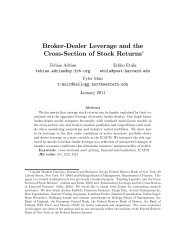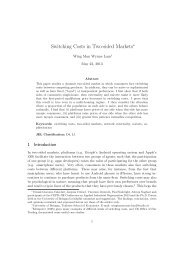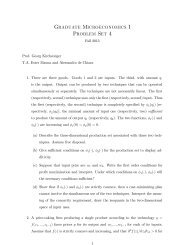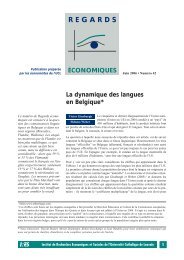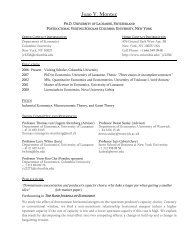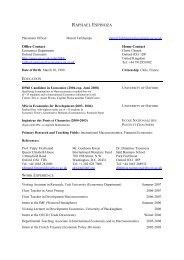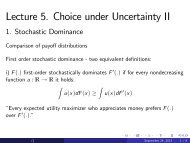HAR volatility modelling with heterogeneous ... - ResearchGate
HAR volatility modelling with heterogeneous ... - ResearchGate
HAR volatility modelling with heterogeneous ... - ResearchGate
You also want an ePaper? Increase the reach of your titles
YUMPU automatically turns print PDFs into web optimized ePapers that Google loves.
model. As it is common in practice, we use three components for the <strong>volatility</strong> cascade:daily, weekly and monthly. Moreover, we use the logarithms of <strong>volatility</strong> measures.Hence, the proposed model reads:loĝV(h)t+h = c + α (d) log(1 + J t ) + α (w) log(1 + J (5)t ) + α (m) log(1 + J (22)t ) (2.13)+ β (d) log C t + β (w) log C (5)t + β (m) log C (22)t+ γ (d) r − t + γ (w) r (5)−t+ γ (m) r (22)−t+ ε (h)t ,We estimate model (2.13) by OLS <strong>with</strong> Newey-West covariance correction for serial correlation.In order to make multiperiod predictions we will estimate the model consideringthe aggregated dependent variable loĝV(h)t+h <strong>with</strong> h ranging from 1 to 22 i.e. from one dayto one month. While, strictly speaking, models <strong>with</strong> h > 1 would require a cascade specification<strong>with</strong> longer frequencies multiple of h, for simplicity and comparison purposes, wewill always retain the standard cascade specification <strong>with</strong> the three natural frequenciesof one day, one week and one month. This can be viewed as a simplifying approximationjustified by its empirically good performance.3 Empirical evidenceThe purpose of this section is to empirically analyze the performance of model (2.13), bothin-sample and out-of-sample. Our data set covers a long time span of almost 28 years ofhigh frequency data for the S&P 500 futures from 28 April 1982 to 5 February 2009 (6,669days). In order to mitigate the impact of microstructure effects on our estimates, thedaily volatilities ̂V t are computed <strong>with</strong> the two-scales estimator proposed by Zhang et al.(2005). 4 Aït-Sahalia and Mancini (2008) show that using the two-scales estimator instead4 The two-scales estimator combines two realized volatilities computed at two different frequencies,where the slower one is computed by subsampling and averaging while the faster one (being a proxy forthe variance of microstructure noise) is used for bias correction. In our implementation of the two-scalesestimator we use a slower frequency of ten ticks returns.11



